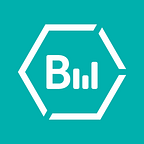Are Your Facebook Ads Making Any Money?
All the marketing experts are preaching Facebook Ads along with the awesome results they’re seeing. But so many businesses are hesitant to get on board. Who can blame them? Realistically, Facebook ads haven’t been around that long compared to other advertising channels like TV and radio. Online advertising itself is still in its early years. So how can you prove to your boss (and yourself!) that Facebook ads are worth investing in?
The Answer Is In The Data
In the early days companies got on board with Facebook ads purely because they thought it was the right thing to do. They took a risk investing without the data to back them up. Thankfully, you don’t have to do this, you can track your activity and prove it’s worth the investment. Facebook itself has some great stats, but it’s when you combine these stats with your Google Analytics data that the magic happens.
Note: If you haven’t set up Google Analytics on your website yet, here’s a great article from Google on how to get set up.
Setting Up E-Commerce and Goals in Google Analytics
To really understand if your Facebook ads are making you money it’s important to have goals in Google Analytics set up, as well as e-commerce, if you’re selling directly from your website.
E-commerce — The best thing to do here is check with your e-commerce platform (Shopify, Squarespace, etc) on how to set this up. If you’re using Wordpress, there are different plugins you can use depending on your setup.
Goals — Within Google Analytics itself you can create Goals. Goals are usually for website conversions that aren’t sales. For example, signing up to a newsletter, filling out a contact form, downloading a brochure etc. If you don’t sell online we highly recommend assigning a monetary value to your goals. This will take a bit of digging but believe us, it’s worth it. You can work out what value to assign by multiplying your average order value by the conversion rate (%). If your average order is $1000 and you typically sell to one out of ten people who fill out your contact form, you would assign this goal a value of $100.
Once you have your e-commerce and goals set up you’re ready to move onto your Facebook Ads.
Tracking Facebook Ads In Google Analytics
Now if you’re fairly comfy with Google Analytics you’re probably thinking of heading straight into your reports to look at traffic that comes from Facebook to see if it’s making any sales. You could do that, but you’ll have all your Facebook traffic mixed in together. Ideally, you want to separate sales that have come from someone seeing a post on Facebook and those that have come from someone seeing an ad on Facebook. This is easily done by adding UTM parameters to the landing page URL. Bookmark this page from Google, you’re going to use it a lot!
With UTM tagging you can send information to Google Analytics about website visitors that click on a particular link.
There are a few rules you need to follow. First, as a minimum you have to include a Campaign Source, Medium and Name. Second, just in case it isn’t obvious, it’s a URL so no spaces. Finally, make it easy to understand!
Source
For Facebook Ads tracking this should always be Facebook. When applying this idea across channels though, make it the channel name e.g. Twitter, LinkedIn, etc.
Medium
This is the type of traffic. For Facebook Ads you could use Paid, CPC, CPM, Display or create your own category. Remember, there’s no right or wrong rule, it’s about what will help you report on your data best.
Campaign Name
Yep, you guessed it, it’s a good idea to keep the Campaign Name the same as the campaign name in Facebook.
While these are the minimum, I recommend one more thing…
Content
Using the Content parameter can help you distinguish Ad Sets from one another or distinguish ads from one another. If you’re a fan of A/B testing this comes in super handy. For example, you’re running a campaign on Facebook to promote your latest product. You create two Ad Sets, one to target your existing website visitors who haven’t made a purchase yet and one to target customers. If you used the same UTM tagging in the URL you’d have no idea how the two Ad Sets perform against each other. Rather than creating two separate campaigns, simply change the Content parameter like this:
Customers:
Website Visitors:
Finding Your Results In Google Analytics
Now you know how to send information through to Google Analytics, it’s time to go through how to find that data in Google Analytics. Under Acquisition, head to Campaigns and choose All Campaigns. From this report add a Secondary Dimension of Ad Content and use the filter to only show the campaigns you’re looking for.
Voila! This will give you a report showing your campaign, split by the content parameter. How easy was that?
I really hope this helps you prove the value of Facebook Ads in your business and helps you get better results too! If you have any questions leave a comment or get in touch. We’re always happy to help!
Happy Tagging!
Originally published at www.beesonmedia.com on July 22, 2016.
